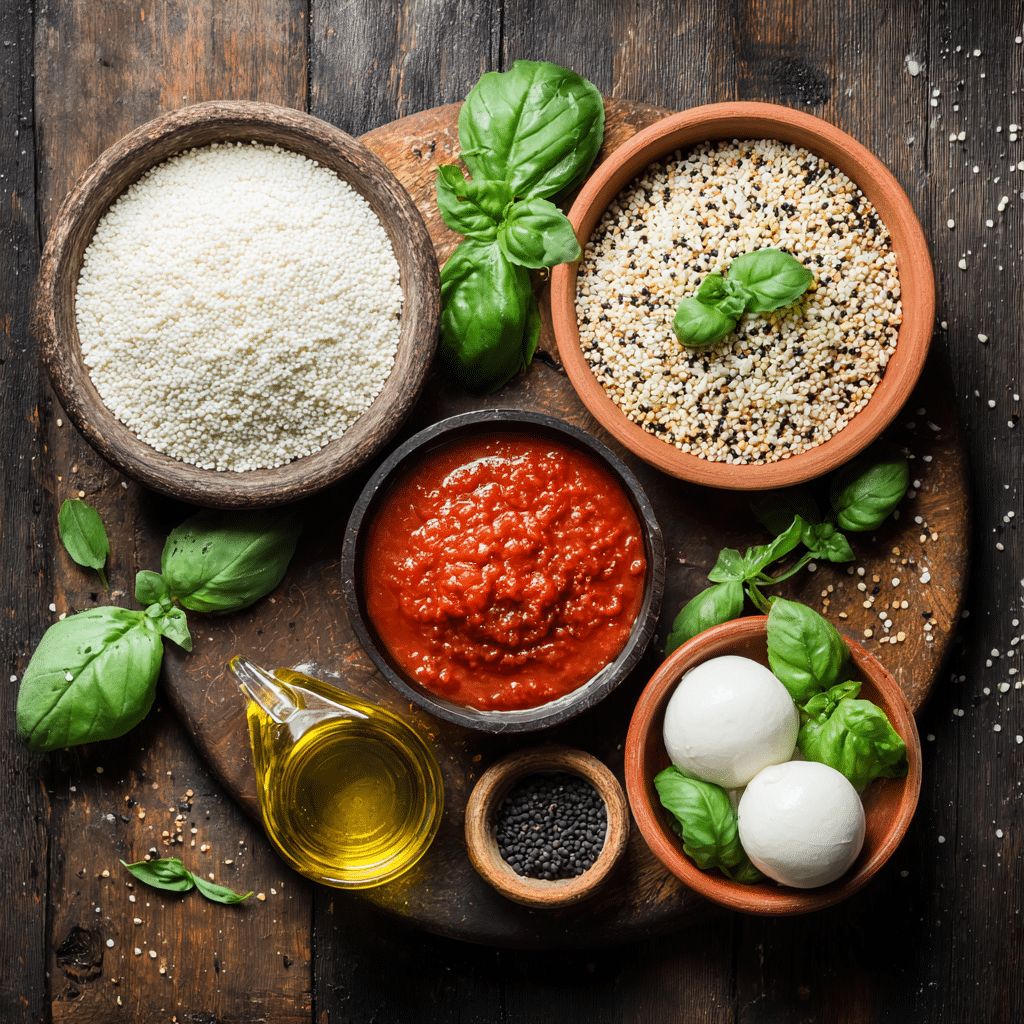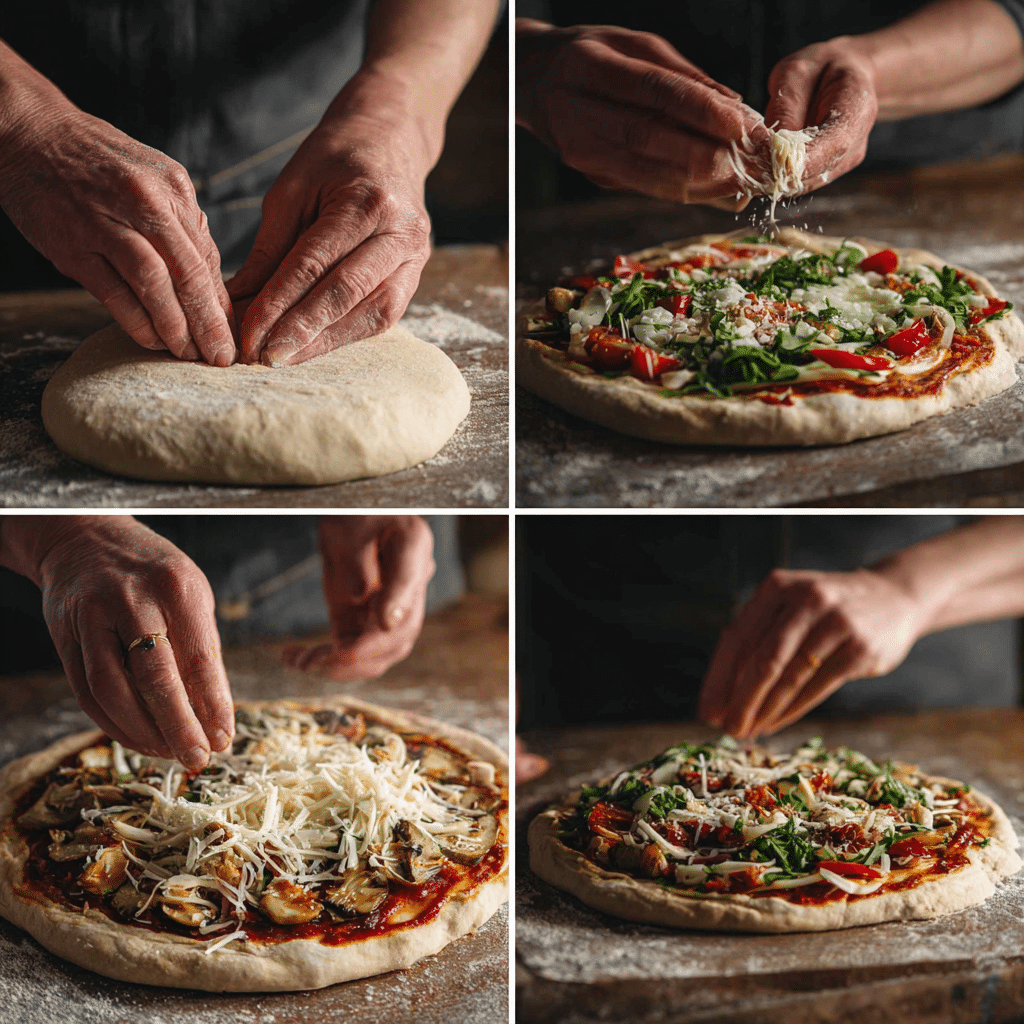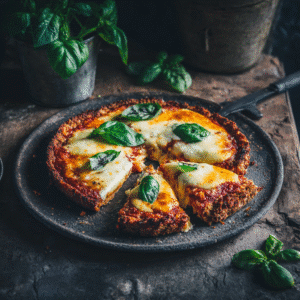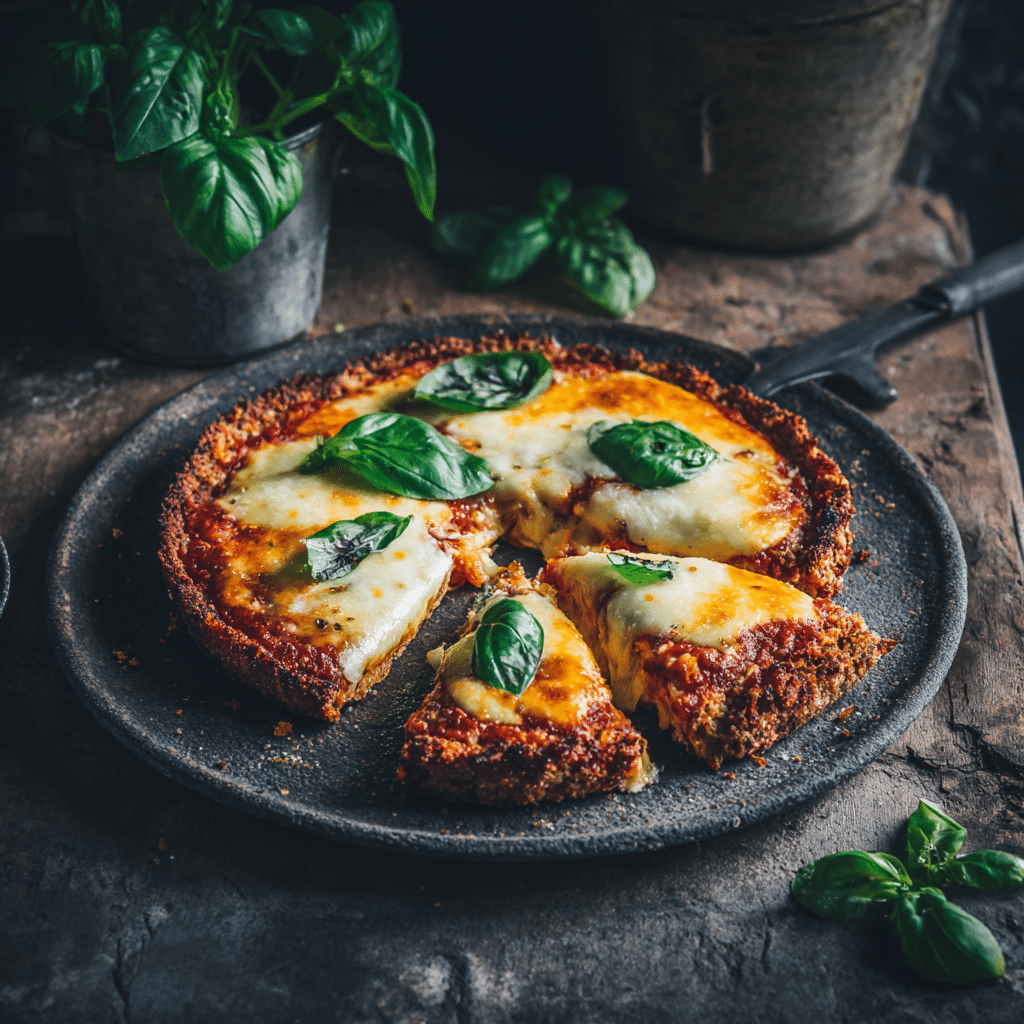Pizza gluten free doesn’t mean missing out on authentic Italian flavor. In fact, it’s your ticket to enjoying everything you love—crispy crust, rich tomato sauce, and gooey mozzarella—without the stomach upset. Whether you’re gluten-intolerant, celiac, or just feeling better wheat-free, this recipe brings you a delicious, nourishing twist on a classic. I’ve tested dozens of flours and dough methods to get the perfect chewy bite. In this article, I’ll show you how to make the best gluten-free pizza at home with simple ingredients, helpful techniques, and no weird aftertaste—just real, rustic Italian joy.
Table of Contents
1: A Gluten-Free Pizza Story Rooted in Tuscany
I never thought I’d give up pizza. Growing up in Tuscany, pizza night was sacred. I remember the smell of my nonna’s wood-fired crust, the way she stretched dough like it was second nature. Back then, gluten-free wasn’t even a concept in our kitchen. Flour was flour, and we used a lot of it. Fast-forward a few years and several sluggish, foggy-headed days later, I found out I was gluten-intolerant. For a Tuscan chef, that diagnosis felt like a betrayal. I thought, there goes pizza.
But giving up gluten didn’t mean giving up flavor. It just meant I had to work harder. I started testing different flours—almond, rice, cassava. Some were too dry, some too chewy, and some were just wrong. But I refused to stop. That’s what led me to develop my perfect pizza gluten free crust. It’s thin yet sturdy, crisp on the edges, and has just the right chew. It passed the ultimate test—my mother’s approval.
Creating this pizza gluten free recipe felt like reclaiming a part of myself. It’s the pizza I make when I want to impress friends who think gluten-free means boring. And it’s the pizza I share with readers who want Italian flavor without compromise. Whether you top it with classic mozzarella and basil or go bold with roasted veggies and pesto, this crust is your canvas.
You’ll also love that it’s dairy-optional. If you’re sensitive to both gluten and lactose, check out my gluten-free dairy-free pizza variation for extra flexibility. And after the pizza, why not browse a few gluten & lactose-free dessert recipes to finish the meal?
This recipe brings all the heart of Italy to your kitchen—no wheat required. Because gluten-free should never mean joy-free.

2: Crafting the Perfect Gluten-Free Pizza Dough
Choosing the Right Gluten-Free Flours
The secret to a stellar pizza gluten free crust starts with your flour blend. One flour won’t do the trick—you need balance. I combine superfine brown rice flour for structure, tapioca starch for stretch, and a bit of sorghum flour for that subtle earthy depth. Avoid pre-made blends that use too much starch or bean flours—they often leave a gritty or bitter aftertaste.
Hydration is key. Gluten-free flours absorb water differently than wheat, so your dough should feel wetter than traditional dough—more like a thick batter. That’s normal. Resist the urge to over-flour it.
And let’s talk binders. Most gluten-free recipes use xanthan gum, but if you’re sensitive to gums, ground psyllium husk is a brilliant alternative. It gives elasticity, traps moisture, and mimics the chew we miss in gluten-free crusts.
Dough Tips for a Chewy, Crisp Finish
You don’t knead pizza gluten free dough in the classic sense, but you do need to mix it well—really well. Let it rest after mixing to hydrate fully and activate the binders. A warm spot helps the yeast do its job.
Instead of shaping the dough by hand, pour and spread it on parchment with the back of a spoon. A light drizzle of olive oil on top before baking gives it that pizzeria finish.
Bake it twice: once to parbake the crust, then again with toppings. This two-step process ensures the center isn’t soggy while the edges get golden and crisp. I share a full dairy-free version of this pizza gluten free recipe in my recipe guide.
Great pizza gluten free dough doesn’t just exist—it shines when you use the right tools, timing, and touch.

3: Topping Your Gluten-Free Pizza Like an Italian
Traditional Flavors That Shine Gluten-Free
Once your pizza gluten free crust is baked to golden perfection, the toppings bring it to life. In Italy, less is more. Start with a simple homemade tomato sauce—just crushed San Marzano tomatoes, olive oil, garlic, and a pinch of salt. Skip the sugar and herbs; let the tomato’s brightness sing.
For cheese, fresh mozzarella is a classic, but if you’re avoiding dairy, go for a high-quality plant-based option that melts well. I’ve had great success using rice-based mozzarella on my gluten-free dairy-free pizza. It browns nicely and gives that satisfying stretch.
Toppings like fresh basil, roasted zucchini, mushrooms, or anchovies stay true to Italian roots while keeping it light and vibrant. Always add delicate greens like arugula after baking so they stay fresh and peppery.
Creative Twists That Respect the Base
While I respect tradition, pizza gluten free opens the door to innovation. A white base made from blended cashews or cottage cheese gives richness without the wheat or lactose. Or try pesto as a base—bright, nutty, and packed with flavor.
For protein, grilled chicken or prosciutto works beautifully. But don’t overload it. A thin crust needs balance. You want every bite to deliver both crisp texture and clean flavor.
I sometimes drizzle balsamic reduction or chili oil right before serving—it adds punch without overpowering the ingredients. Remember, your crust is the foundation. Treat it with care, and it’ll hold anything you pile on—beautifully and deliciously.
Want to end your meal on a high note? After baking your pizza gluten free, consider pairing it with something sweet from my gluten and lactose-free dessert recipes section. The balance of savory and sweet never fails.
4: Serving and Storing Gluten-Free Pizza the Right Way
How to Serve Pizza Gluten Free—Fresh and Hot
When it comes to serving pizza gluten free, timing is everything. Gluten-free crusts can go from perfect to tough if they sit too long. That’s why I recommend slicing and serving it within 5 minutes of the final bake. Use a sharp pizza wheel and cut gently—gluten-free crusts are tender and deserve respect.
Always serve it on a wooden board or warm tray to preserve its crisp base. If you’re hosting, keep it in a slightly warm oven until everyone’s seated—just 200°F is enough to maintain temperature without drying it out.
For a true Italian touch, offer a drizzle of good olive oil, some cracked pepper, or fresh chili flakes at the table. And don’t forget a fresh side salad with lemon vinaigrette—it balances the richness of the pizza beautifully.
How to Store Leftovers Without Losing Texture
One of the best things about this pizza gluten free recipe is that it stores and reheats well. If you have leftovers (which is rare in my house!), let the slices cool completely, then wrap them in parchment and slide into an airtight container. Keep them refrigerated for up to 3 days.
To reheat, skip the microwave—it makes the crust rubbery. Instead, reheat slices in a skillet over medium heat with a lid for 4–5 minutes. The base re-crisps while the cheese melts again. Or use an oven at 375°F for about 8 minutes.
Want to prep ahead? You can parbake the crust and freeze it, then top and bake it straight from frozen. This way, you’ve always got pizza gluten free on hand for a quick weeknight meal.
And if you’re looking for more gluten-free Italian dishes, check back at GoldenGlutenFree.com—I’m always adding new ideas inspired by my Tuscan roots.

5: Conclusion
Pizza gluten free is more than a dietary workaround—it’s a celebration of flavor without compromise. With the right flours, simple techniques, and a little Tuscan soul, you can craft a pizza that’s crisp, chewy, and utterly satisfying. From choosing the perfect dough base to topping it with bold, balanced flavors, you’re not just recreating pizza—you’re redefining it.
If you’re new to gluten-free or just looking to upgrade your current recipes, this pizza is the one to master. And once it’s on your table, trust me—no one will ask where the gluten went.
Try it tonight. You’ll taste Italy in every bite.
Which pizza is best for people with gluten intolerance?
The best pizza for those with gluten intolerance is one made from a dedicated gluten-free dough using rice flour, tapioca, or sorghum. Always avoid crusts labeled “low-gluten” or “wheat-free”—those still contain gluten. My homemade pizza gluten free recipe is built from scratch with safe flours and no cross-contamination, making it ideal for anyone sensitive to gluten.
Can you eat gluten-free at an Italian restaurant?
Yes, but with caution. Some Italian restaurants offer gluten-free pizza or pasta, but shared ovens and surfaces may lead to cross-contamination. Always ask if they use a separate prep area and oven. When in doubt, stick to naturally gluten-free dishes like risotto or grilled meats with vegetables.
Is spelt pizza gluten-free?
No. Spelt contains gluten, even though it’s an ancient grain. It’s not safe for people with celiac disease or gluten intolerance. Despite its reputation as a “healthier wheat,” spelt is still a form of wheat and should be avoided on any gluten-free diet.
Does L’Osteria have gluten-free pizza?
L’Osteria offers a gluten-free option in some locations, but availability varies. If you’re highly sensitive, double-check their kitchen practices. Ask whether the crust is prepared and baked separately to prevent gluten exposure. When unsure, it’s safest to make pizza gluten free at home using trusted ingredients.

Pizza Gluten Free – Authentic Italian Crust Without Wheat
Ingredients
- 1 cup superfine brown rice flour
- 1/2 cup tapioca starch
- 1/4 cup sorghum flour
- 1 tsp sea salt
- 1 tbsp ground psyllium husk or 1 tsp xanthan gum
- 1 packet active dry yeast
- 1 tsp sugar
- 3/4 cup warm water
- 1 tbsp olive oil plus more for drizzling
- 1/2 cup tomato sauce San Marzano preferred
- 1/2 cup fresh mozzarella or dairy-free alternative
- Fresh basil leaves
- Optional: roasted vegetables mushrooms, arugula, prosciutto
Instructions
- Preheat oven to 425°F (220°C) and line a baking sheet with parchment paper.
- In a small bowl, activate yeast with warm water and sugar; let sit for 5–10 minutes.
- In a large bowl, mix brown rice flour, tapioca starch, sorghum flour, salt, and psyllium husk.
- Pour in yeast mixture and olive oil; stir until a sticky batter forms.
- Let dough rest for 30 minutes in a warm place.
- Spread dough onto parchment with the back of a spoon to form a circle or rectangle.
- Drizzle with olive oil and parbake for 10 minutes.
- Remove crust, add tomato sauce and toppings, then bake another 10–12 minutes until golden and crisp.
- Top with basil or arugula, and serve immediately.

